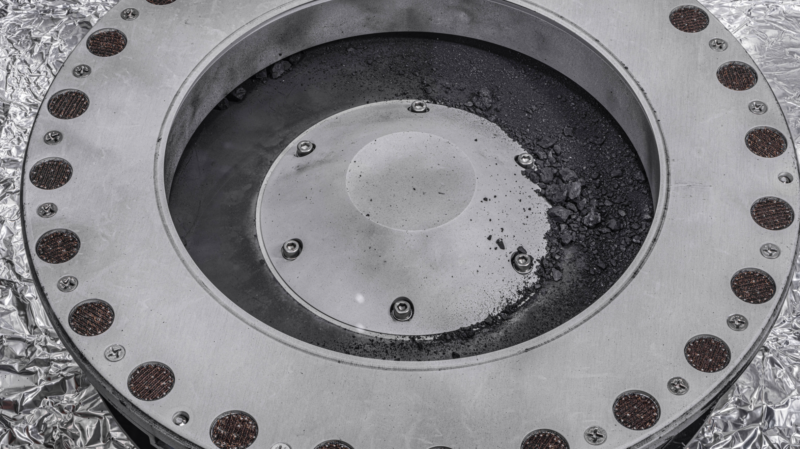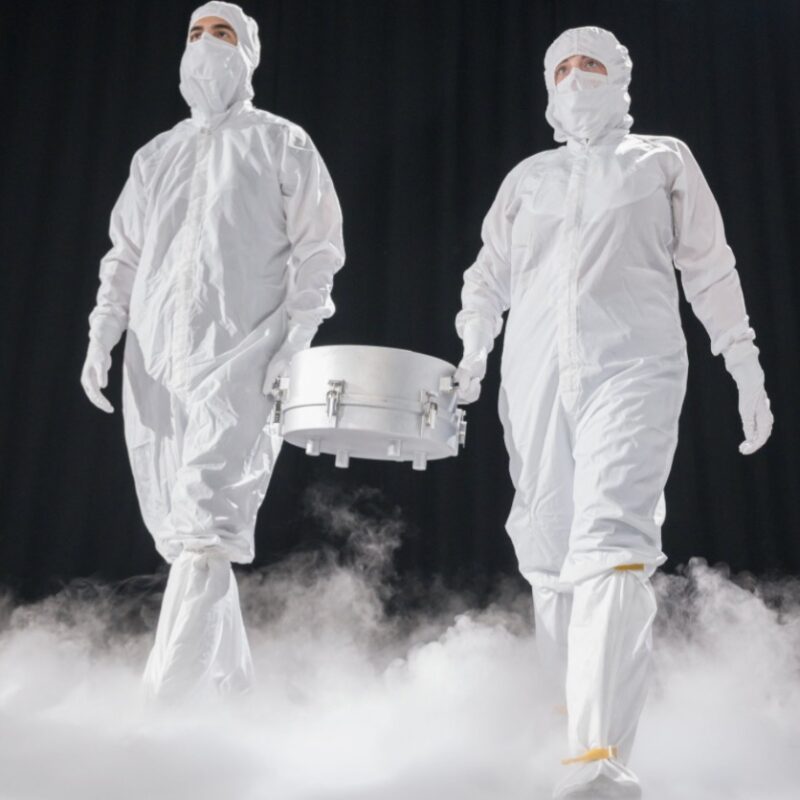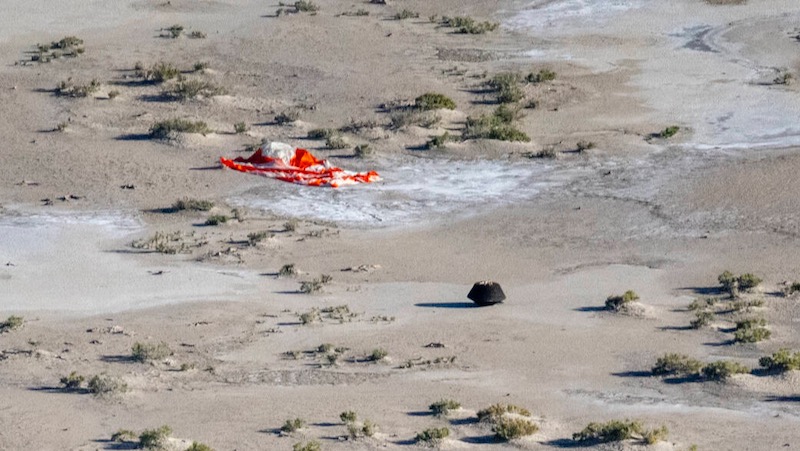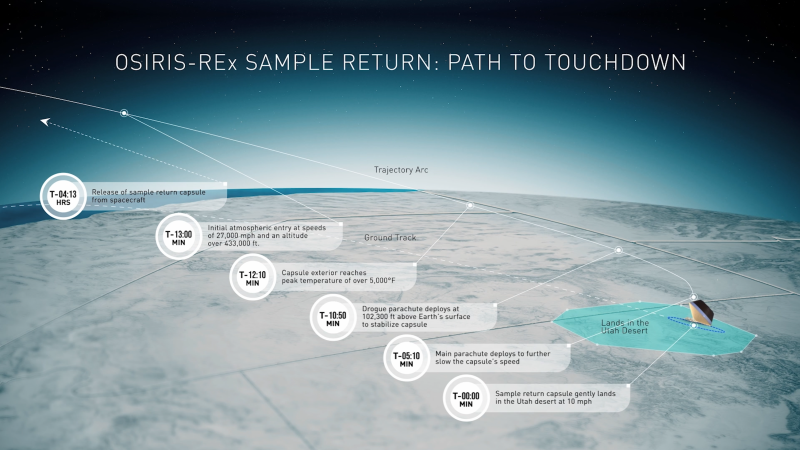
Bennu sample container finally opened
After months of effort, the curation team at NASA’s Johnson Space Center in Houston was able to remove two stubborn fasteners on the canister dropped back on Earth last September, in an historic return by the OSIRIS-REx spacecraft. Those stuck fasteners had prevented researchers from reaching the precious sample of pristine material collected from asteroid Bennu. NASA reported its techs got the lid open on Thursday (January 11, 2024).
Our engineers and scientists have worked tirelessly behind the scenes for months to not only process the more than 70 grams of material we were able to access previously, but also design, develop, and test new tools that allowed us to move past this hurdle.
Workers must still completely take apart the sample container – the Touch-and-Go Sample Acquisition Mechanism, or TAGSAM – before they can access the main sample. When that task is finished, we’ll finally get a look at the material inside, which traveled more than a billion miles to reach Earth.
The remainder of the bulk sample will be fully visible after a few additional disassembly steps, at which point image specialists will take ultra-high-resolution pictures of the sample while it is still inside the TAGSAM head. This portion of the sample will then be removed and weighed, and the team will be able to determine the total mass of Bennu material captured by the mission.
The spacecraft that brought the Bennu sample back home to Earth is still flying, and NASA has renamed the mission and given it a new target. Now called OSIRIS-APEX, the mission’s new goal is reaching the asteroid Apophis. It should arrive there in April of 2029, just as Apophis is closest to Earth.
A glimpse of dust from Bennu

The intrepid OSIRIS-REx spacecraft carried its precious cargo back to Earth: it was the biggest carbon-rich asteroid sample ever delivered to earthly scientists, scooped up from the surface of asteroid Bennu. The spacecraft dropped the sample back into Earth’s atmosphere on September 24, 2023, and now the craft is winging its way toward a 2nd asteroid encounter, with infamous asteroid Apophis. Meanwhile, on October 11, 2023, NASA gave us our first glimpse at the sample of asteroid Bennu.
NASA said the rocky asteroid sample from Bennu is an estimated 8.8 ounces, or 250 grams. So far, however, the canister containing the main sample has not been opened. Luckily, there was asteroid material covering the outside of the collector head, canister lid, and base. So the scientists do have some bits of Bennu in hand.
The program on October 11 featured scientists talking about what most excites them: we now have a primitive sample of the early solar system! No doubt those science minds are spinning, imagining the insights they might gain from the main Bennu sample, when the canister is finally opened. You can watch the full coverage of the sample reveal, here.
NASA also aired live footage of the sample’s plunge into our atmosphere, and its impact on the Utah desert floor, at a Department of Defense training site. You can watch a replay of that coverage here.
The 2024 lunar calendars are here! Best Christmas gifts in the universe! Check ’em out here.

NASA said on October 11:
The goal of the OSIRIS-REx sample collection was 60 grams of asteroid material. Curation experts at NASA Johnson, working in new clean rooms built especially for the mission, have spent 10 days so far carefully disassembling the sample return hardware to obtain a glimpse at the bulk sample within. When the science canister lid was first opened, scientists discovered bonus asteroid material covering the outside of the collector head, canister lid, and base. There was so much extra material it slowed down the careful process of collecting and containing the primary sample.
‘Our labs were ready for whatever Bennu had in store for us,’ said Vanessa Wyche, director, NASA Johnson. ‘We’ve had scientists and engineers working side-by-side for years to develop specialized gloveboxes and tools to keep the asteroid material pristine and to curate the samples so researchers now and decades from now can study this precious gift from the cosmos.’
Within the first two weeks, scientists performed ‘quick-look’ analyses of that initial material, collecting images from a scanning electron microscope, infrared measurements, X-ray diffraction, and chemical element analysis. X-ray computed tomography was also used to produce a 3D computer model of one of the particles, highlighting its diverse interior. This early glimpse provided the evidence of abundant carbon and water in the sample.
In other words, as expected, an initial look at the asteroid sample revealed it contains much the same materials from which our own planet Earth is made. But there’s a big difference between the asteroid sample and earthly dirt. Earth has been subjected to billions of years of weather – wind and water, both of which cause erosion and change – due the dynamic processes in our earthly atmosphere. Bennu doesn’t have an atmosphere. Its dirt is a pristine example of the early solar system.
The 2024 lunar calendars are here! Best Christmas gifts in the universe! Check ’em out here.
The day the asteroid sample returned
On September 24, after the spacecraft had released the asteroid sample, and when NASA was sure it was on target, a crew on the ground rushed quickly to the landing site. They determined it was safe to transport the asteroid sample to a clean room in Utah.
The drop took place just three minutes ahead of schedule, by the way. Pretty good timing, considering OSIRIS-REx had grabbed its sample from Bennu back in 2020. And the spacecraft had spent a year and a half observing the asteroid from orbit. The spacecraft then left Bennu orbit and aimed back toward Earth in May 2021.
And now the sample has gone to Johnson Space Center in Houston, where the livestream will take place.
Later, a portion of the asteroid sample will be divided up and sent to scientists around the world for study.

Big buzz for asteroid sample!
Your package has been delivered.
The #OSIRISREx sample return capsule containing rock and dust collected in space from asteroid Bennu has arrived at temporary clean room in Utah. The 4.5-billion-year-old sample will soon head to @NASA_Johnson for curation and analysis. pic.twitter.com/Ke0PcDAKt0
— NASA (@NASA) September 24, 2023
After a journey of nearly 3.9 billion miles, the #OSIRISREx asteroid sample return capsule is back on Earth. Teams perform the initial safety assessment—the first persons to come into contact with this hardware since it was on the other side of the solar system. pic.twitter.com/KVDWiovago
— NASA (@NASA) September 24, 2023
TOUCHDOWN! The #OSIRISREx sample capsule landed at the Utah Test and Training Range at 10:52am ET (1452 UTC) after a 3.86-billion mile journey. This marks the US's first sample return mission of its kind and will open a time capsule to the beginnings of our solar system. pic.twitter.com/N8fun14Plt
— NASA (@NASA) September 24, 2023
Congratulations @NASA and the #OSIRISREx team on bringing a piece of space down to earth! What an amazing achievement! pic.twitter.com/ibd09fkIVc
— Chris “Hanks” Sembroski ?? (@ChrisSembroski) September 24, 2023

OSIRIS-REx’s journey to Bennu and back
OSIRIS-REx launched in 2016 and arrived at Bennu in 2018. In 2020, it touched down on the asteroid and scooped up material from the surface. Then, in 2021, the spacecraft left Bennu on its return mission to Earth.
When OSIRIS-REx dropped off the asteroid sample early Sunday morning, the capsule spiraled downward for hours before hitting Earth’s atmosphere. When it first hit the atmosphere, it was speeding at about 27,650 mph (44,500 kph). A heat shield protected the sample inside as the capsule temporarily became a superheated ball of fire.
Eventually, a series of parachutes deployed to slow the capsule further. By the time the capsule impacted the Utah desert, it had slowed down to a speed of 11 mph (18 kph).

Continuing on to Apophis
After OSIRIS-REx fired its thrusters to keep it from colliding with Earth, it continued on its way, heading for Apophis. Apophis is perhaps the most infamous asteroid of our time. On Friday, April 13, 2029, the 1,100-foot (335-meter) space rock will come within 19,662 miles (31,600 km) of Earth’s surface. That’s closer than many Earth-orbiting satellites. As the asteroid encounters Earth’s gravitational field, one result could be asteroid-quakes on Apophis. This passage will also change the orbit of Apophis slightly. Some observers will even be able to see Apophis as it passes.
Some originally believed that Apophis had a chance of colliding with Earth. But that possibility has been ruled out. Apophis will not hit us.
OSIRIS-APEX, now renamed, will reach Apophis in 2029. This extended mission will have OSIRIS-APEX orbiting and studying Apophis for a year and a half.
The spacecraft will venture close enough to the asteroid to stir up loose material on the asteroid’s surface.

Bottom line: After months of effort, the curation team at NASA’s Johnson Space Center removed two stubborn fasteners that had prevented researchers from reaching the precious sample of pristine material from asteroid Bennu.











